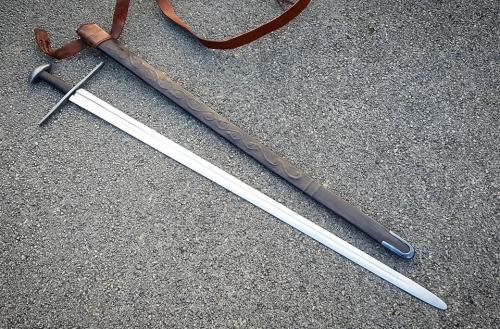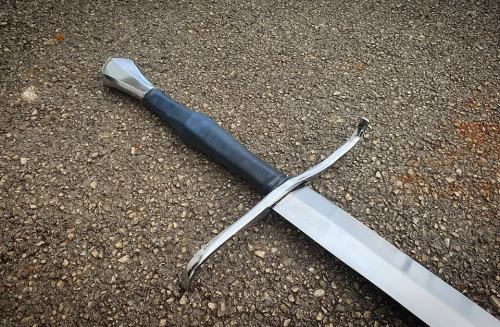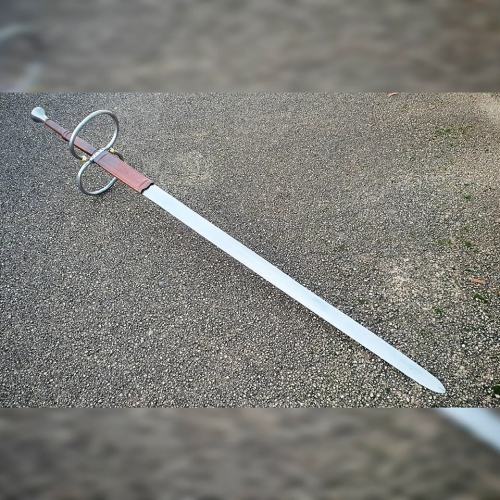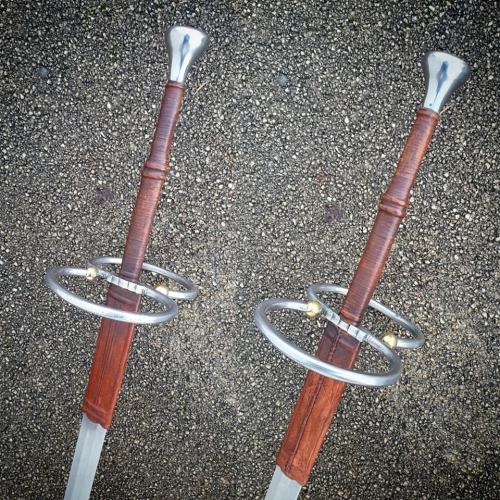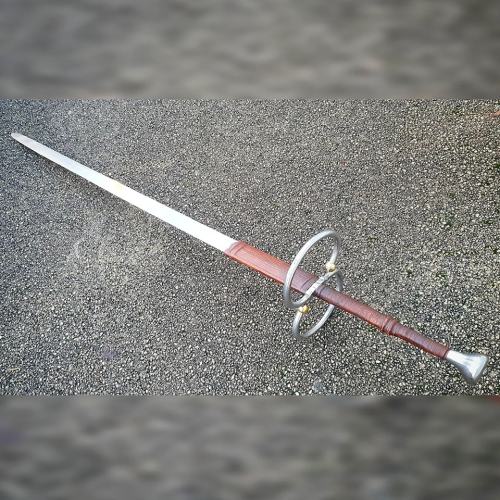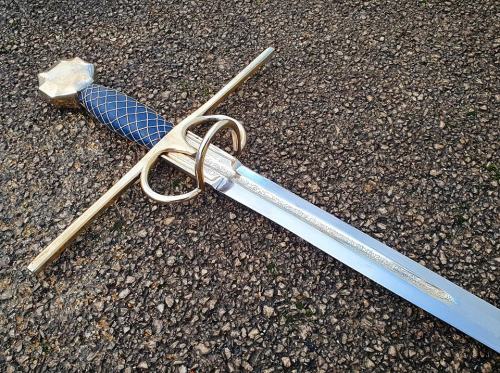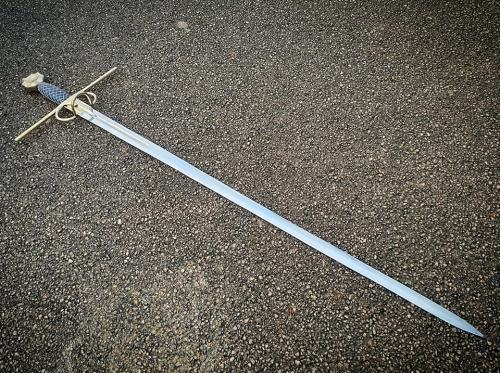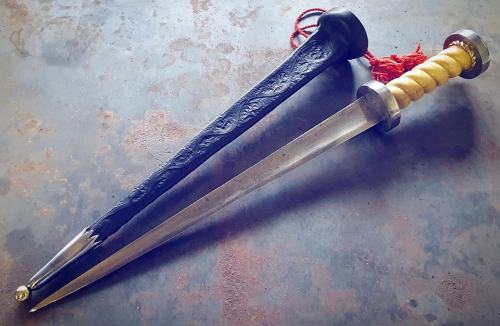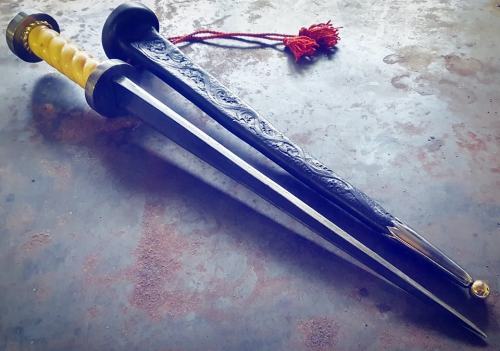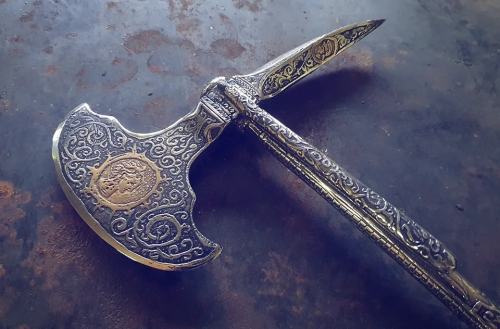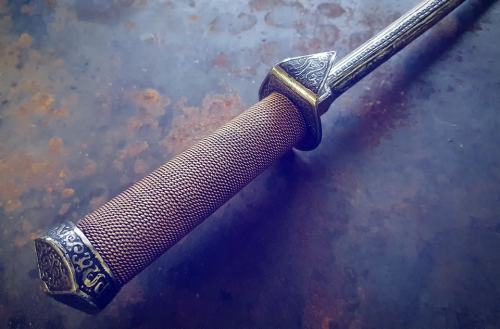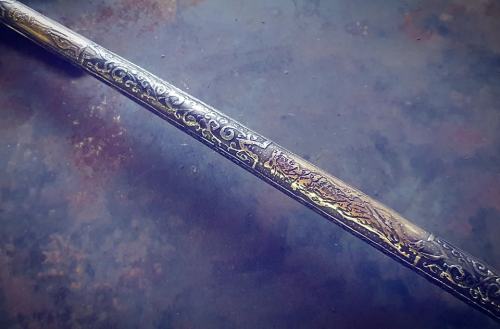A Celtic Anthropomorphic Hilted Short Sword/Dagger and Scabbard, 1st cent. B.C.
Based mostly on two local examples (one found in 1900 in Mirebeau-sur-Bèze, and the other in the river Saône, at the ford called “Iles Percées” in 1974, and both kept in the @museedenon in Chalon-sur-Saône) as well as others.
The blade is high carbon steel with a hollow ground diamond section, and has been slack-quenched so that only the edges would harden. A sun, crescent moon and two silver lines were inlaid on one face.
The hilt is bronze, cast in 4 parts. The shape of it recall the “proper” anthropomorphic hilts of the earlier phases in a simplified form, but it’s not hard to identify the legs, body, arms and head.
The scabbard is bronze, and as should be can be taken down relatively easily. The front plate overlaps the back plate on the sides, and the throat piece and chape also keep holding these two together.
I have a boundless admiration for the Celtic smiths of old.
There is both much to say about these swords - questions, mostly, and not much in terms of answers.
Such swords appear all over Europe, and a striking feature in addition to the hilt is these inlays of a moon and a sun - though some swords only show a single central strip of gold.
Maybe my current reads on metal finishes has me overthink on the meaning of these inlays - or rather, the fact that they did have a meaning, now lost to us.
But it made sense to me that the blade could have been heat-blued, to emphasise the moon and sun at twilight - the silver lines could then be the Milky Way or the Divide between Night and Day, maybe at the time of the Equinox.
Bluing of blades is also found later on inlaid Mediaeval swords, with a possibility of a continuity of this technique. I’d say more, but space here is limited.
I don’t know.
Not to mention the strong symbolism of the scabbard (you do know the Latin word for scabbard, right ?) associated with the blade dangling between the hilt’s “legs”.
Ritual blade fitting with fertility/astronomy/renewal of the cycle ?
Damn you, Celts and Gauls, who made such marvels and didn’t write down a thing, and now all is lost in the sea of Time and Silence.
All that we can affirm is the undeniable highly symbolic meaning of such artifacts - as the Archaeologist in me would say.
Many thanks to Dr Guillaume Reich - leading expert on La Tène weapons - for the advice, insight and bibliography.







































